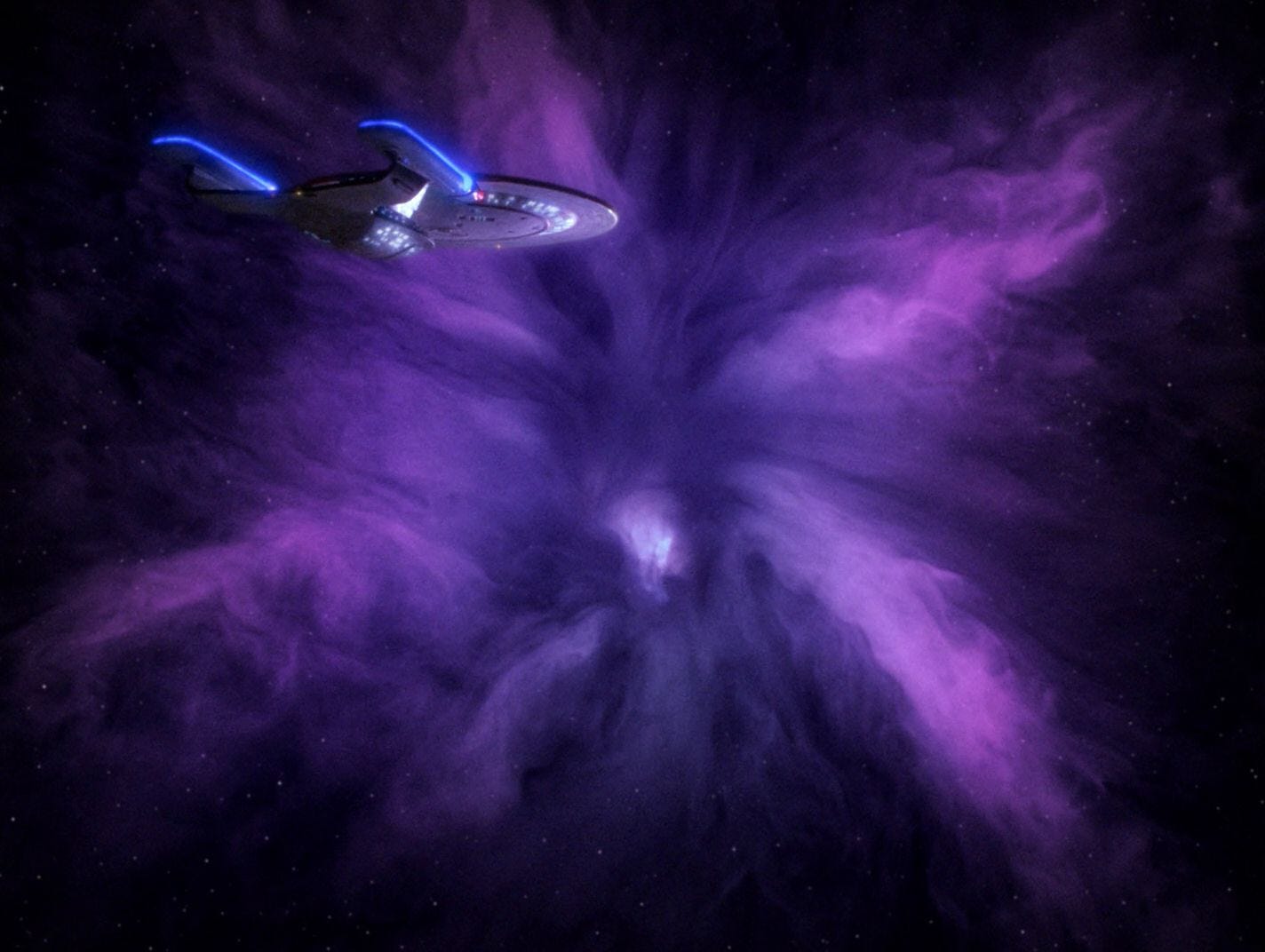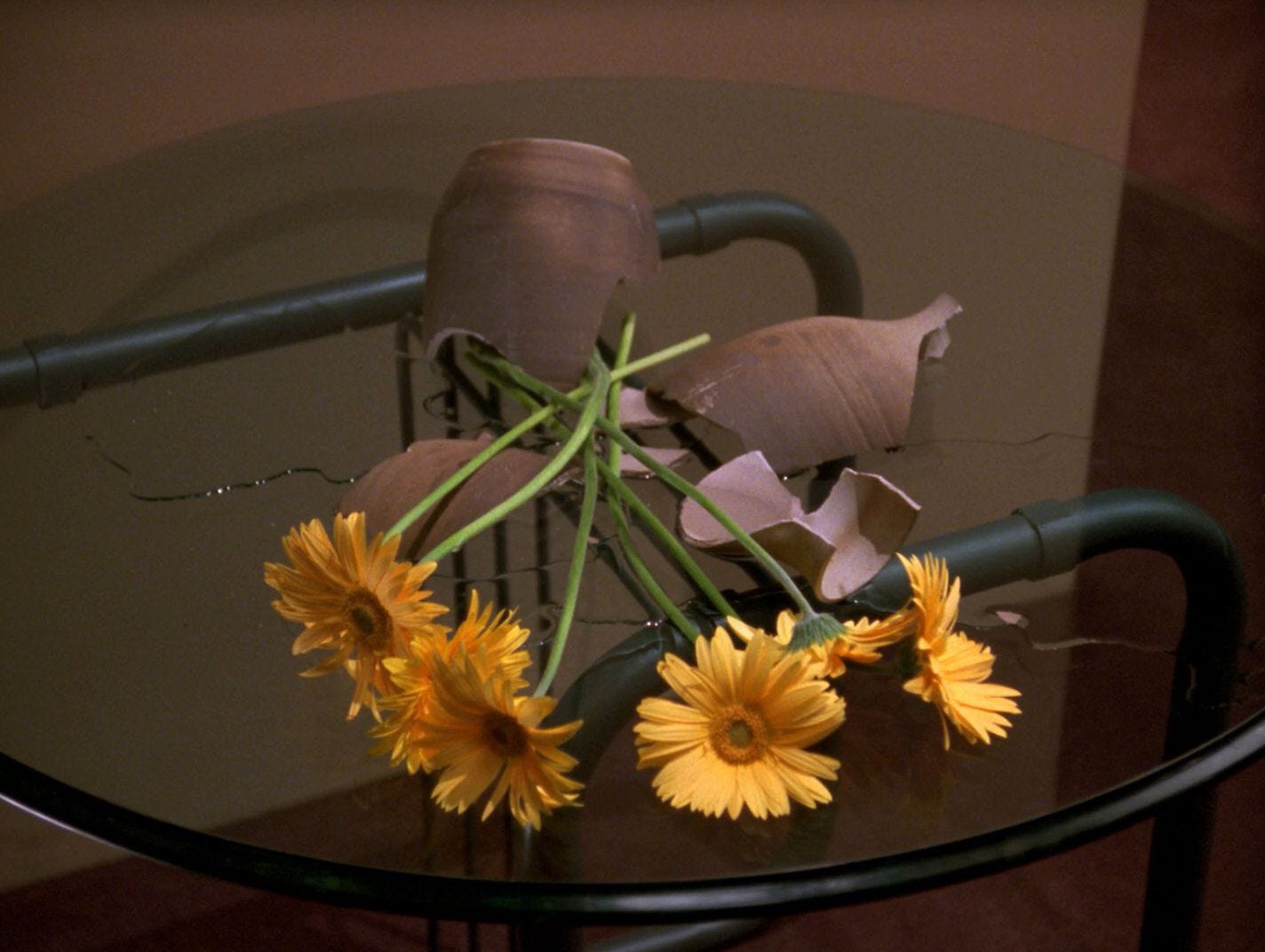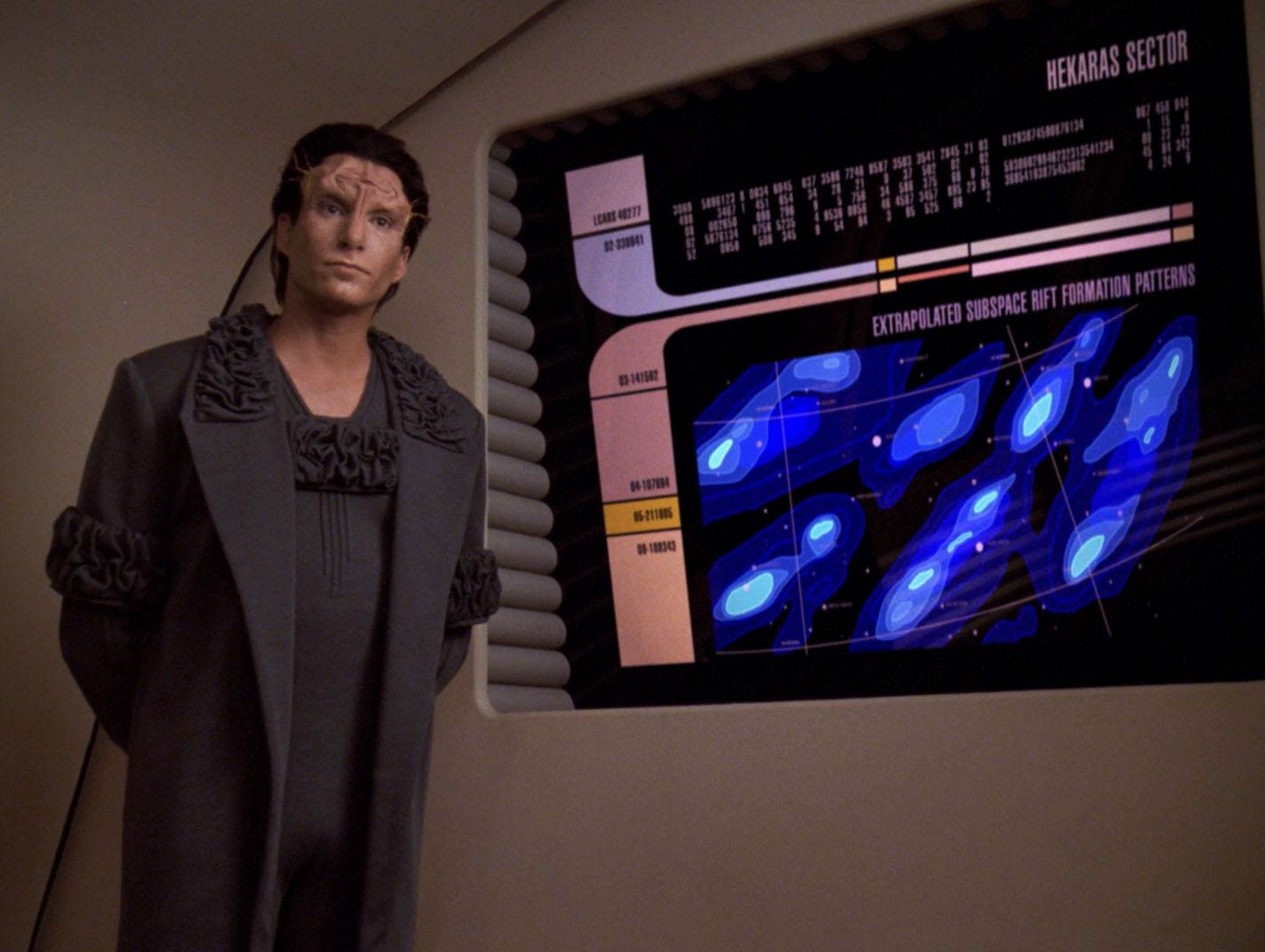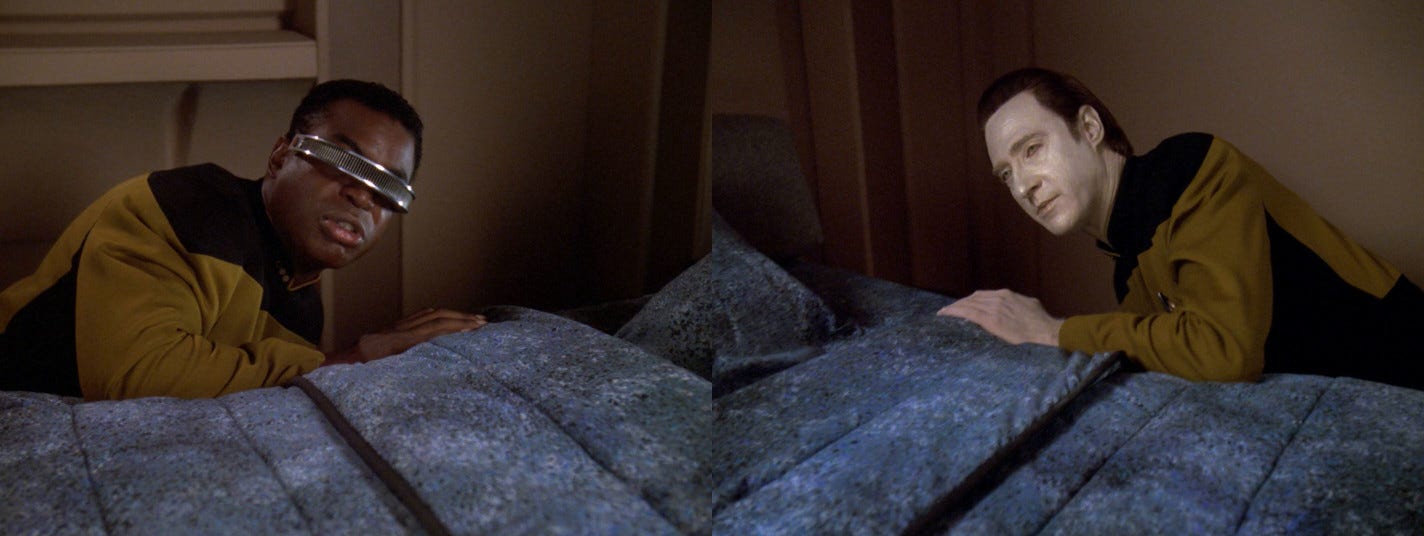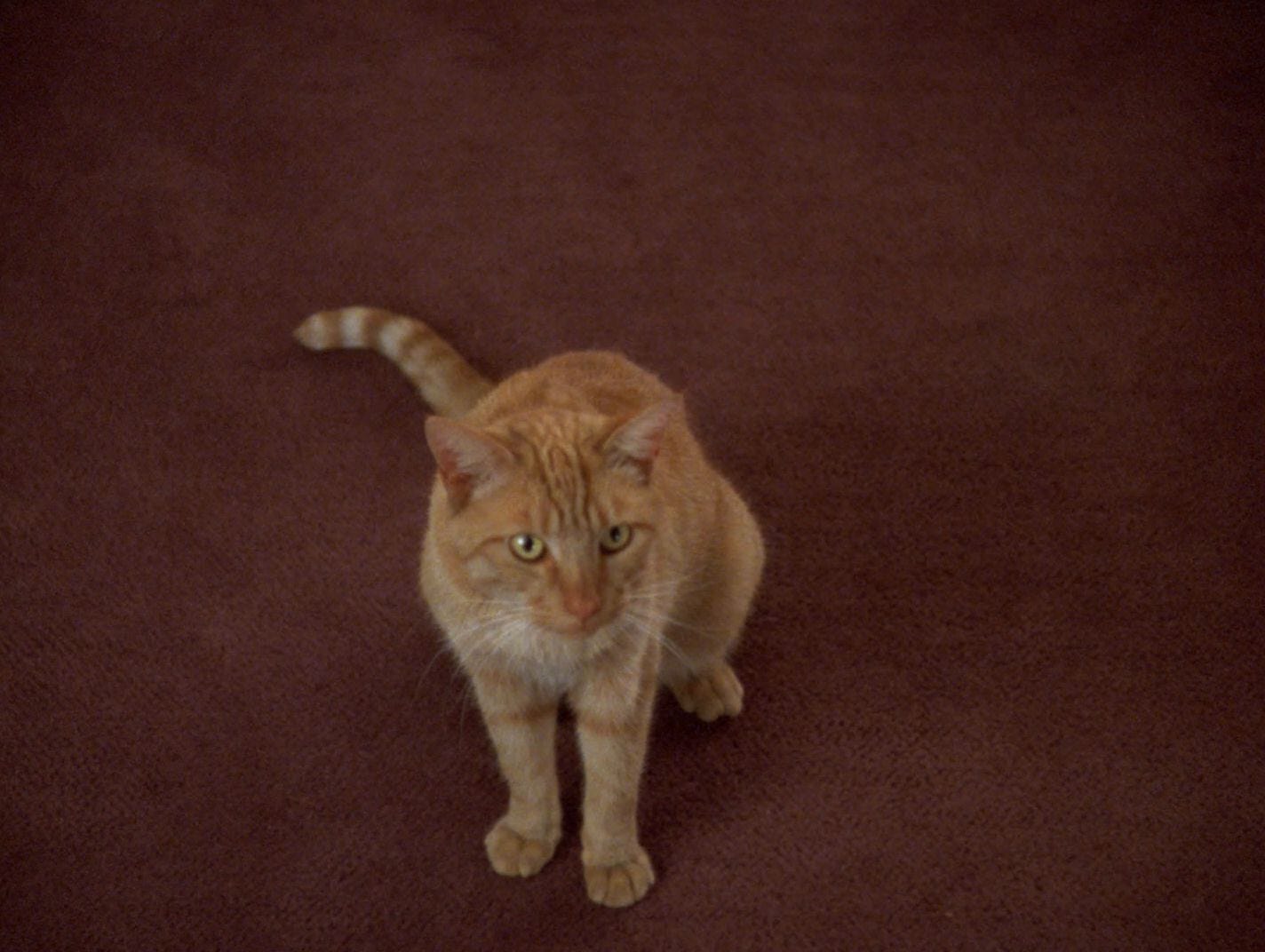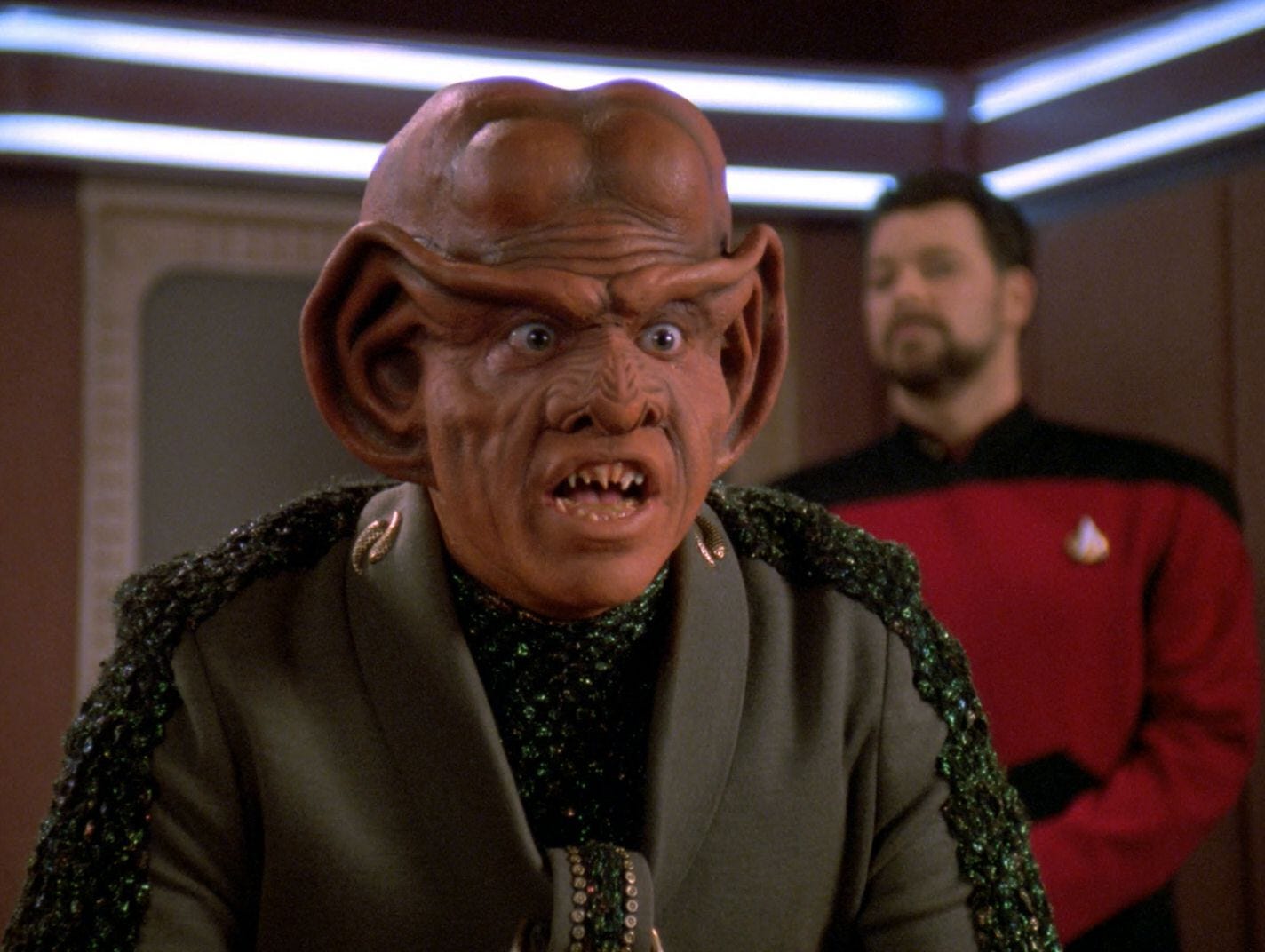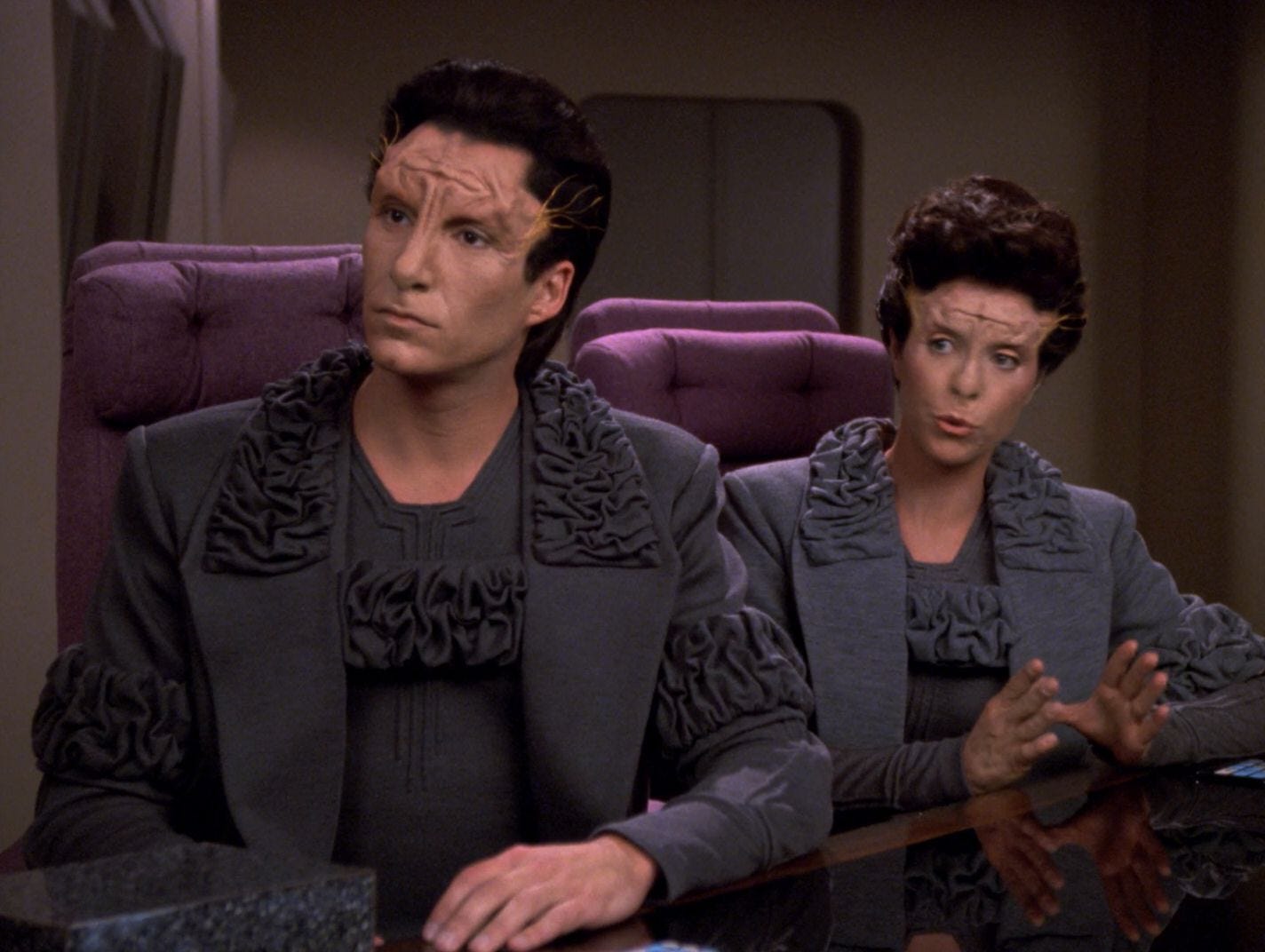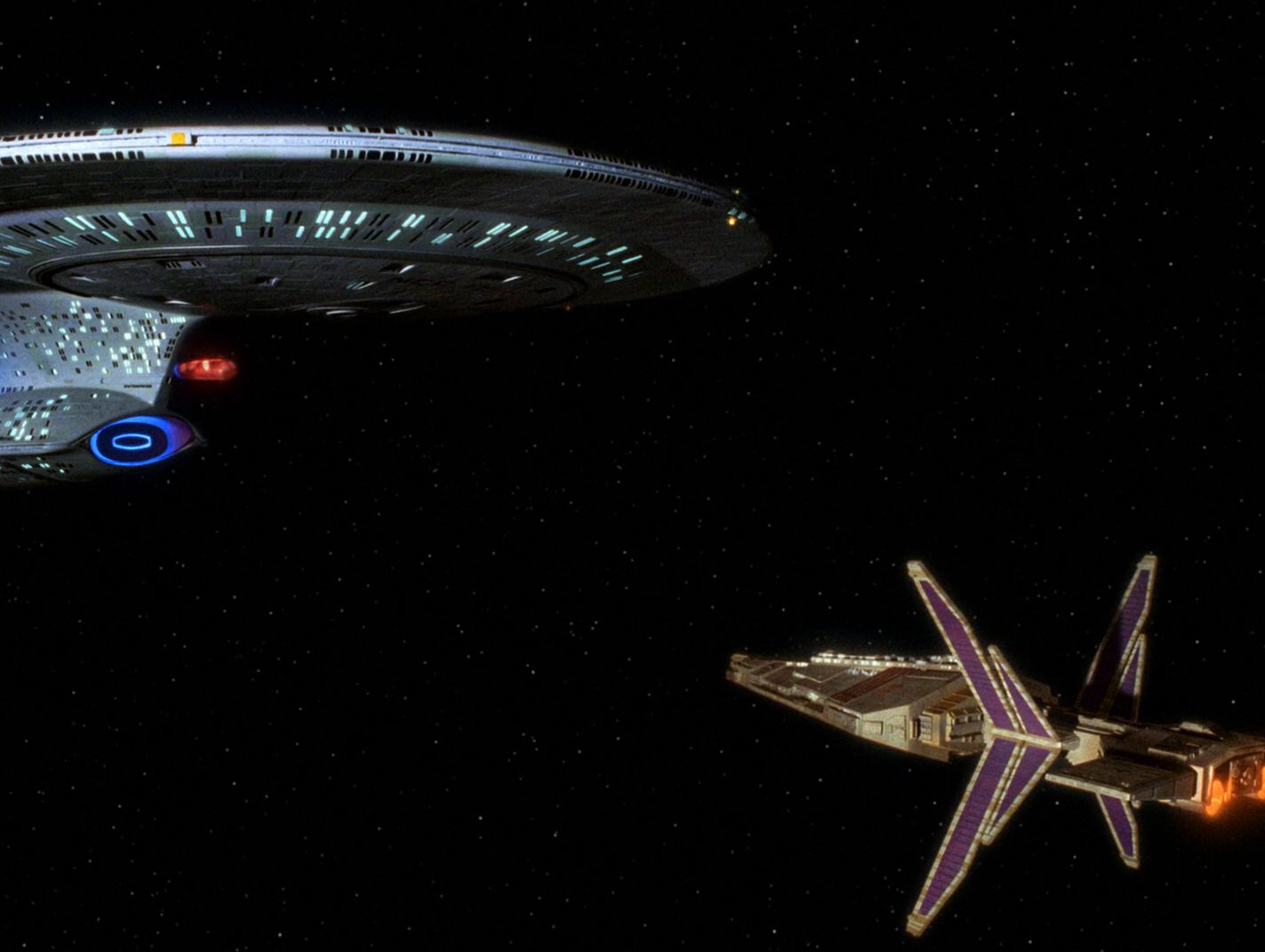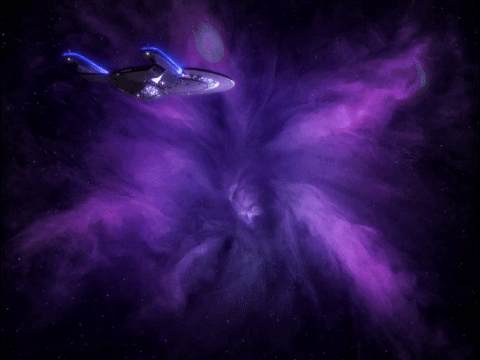Force of Nature
TNG shivs the Star Trek franchise right in the warp core from a misguided desire to make a clumsy environmentalist allegory
Data walks in on a carefully arranged broken vase that has obviously not been broken by a cat. Still, this is the story LaForge recounts - you have suspect he's framing Spot for a crime he didn't commit. Oh wait, they're calling Spot she now. Well, let’s not get distracted by the cat’s spontaneous change of sex and carefully examine at this broken crockery… it didn’t even fall on the floor. Clearly somebody placed the fragments there after hitting it with a blunt object.
If only that was the most disappointing aspect of this episode, but no, here comes the main plot about how starships are damaging space-time and rendering the Hekaran homeworld uninhabitable. As a result, two space environmentalists have been secretly sabotaging passing vessels, before popping out from their hiding place to lecture everyone about how bad warp drive is. Fortunately, one of them commits suicide to prove a point, leading to a technobabble-laden starship rescue mission inside a newly formed rift that at least lends some semblance of excitement to the limp corpse of this episode.
Words
Why doesn’t Force of Nature work...? Classic Trek was full of clever allegories that engaged with timely Civil Rights and Cold War issues in clever and compelling ways. Surely these sci-fi parables are Star Trek bread and butter, so why does this attempt to make a point about what was then called global warming fall so flat on its face? Let’s start by looking at how they even came to greenlight this clunker of an episode, which feels like a throwback to season one’s intermittent outbreaks of crass moralising.
Back in the previous season, Joe Menosky had pitched a concept known as “Limits”. They attempted to squeeze the idea into a number of places, most notably “Suspicions”, but it never found a home. Then at the start of this year, Jeri Taylor arranged a breakfast meeting between Naren Shankar and Brannan Braga with an environmental watchdog (nobody has said which), and apparently they came back feeling inspired. As Taylor recalled:
Naren was so galvanized. He said, ‘I want to take a crack at “Limits”. I want to do this. This is important’. I agreed. It was a story I really wanted to do and I think it does make an important statement, but dramatizing a huge issue like that is always the trouble.
One of those problems, as Taylor understood, was that the episode flies off in all directions at once:
When the script was written, it turned out to be very, very short and so we then started adding scenes about Data’s cat. By luck, or by bad luck, all of those scenes turned out to be at the beginning of the show, so you had an episode that started very fitfully and seemed to be about Data’s cat and then it took a turn and seemed to be about Geordi and his rivalry with this other guy. Then it went back to the cat and then, finally, in about the third act, the real story began and, by that point, I think people were hopelessly lost. It sort of never got back on track, but it's still an important idea and our intentions were good.
But good intentions do not make good sci-fi. Shankar, who wrote the teleplay, called it “not one of my finer moments”, while Michael Piller called it “the worst show I collaborated on this season”. Indeed, it caused him to hold several meetings about where the season was headed because he felt “we were letting it slip away”. Taylor, as effective showrunner, bears some of the responsibility here. Despite admitting that environmental issues are “hard to dramatise”, she still thought Shankar had a good shot at dealing with the “doomed premise” and followed it through to its bitter conclusion.
Yet this misses the deeper point which is that effective allegory, much like good poetry, must get at a deeper truth if it is to land. When it makes instead a partisan political point, the substitution of politics for veracity will always land falsely. Now I’m a supporter of practical environmentalism... but nobody in recent years has actually advanced any such thing! Even in 1993 when this was written, there was a problematic schism between scientific evaluation of environmental issues and moral evaluation of those same situations, one that eventually short circuited the entire field of climate science and largely sank authentic environmental concerns. We are currently living with the consequences of this mess, which has only worsened over the last two decades.
But above and beyond this philosophical complaint is the pragmatic problem that forcing starships to impose a speed limit to prevent space-time damage is completely toxic to the very premise of Star Trek. While it is in no way realistic to suppose that in a few hundred years we’ll be zooming around the galaxy at speeds that would undo temporal causality, that doesn’t really matter. When we watch sci-fi (or fantasy for that matter), we accept the premises of the imaginary universes in order to go on the journeys they are taking us on. The warp drive is central to Star Trek’s storytelling. Sabotaging it at the level of the franchise’s persistent lore is foolish, and it is hardly surprising that outside of TNG season seven, the consequences of this episode are swiftly erased and ignored.
As Brannon Braga put it “When you limit warp drive, the rug is being pulled out from under Star Trek.” I couldn’t agree more.
Acting Roles
The interplay between LeVar Burton’s LaForge and Brent Spiner’s Data around Spot in this episode falls horribly flat. I don’t even know why... it’s not that dissimilar from many similar scenes in earlier episodes that more or less work.
If I had to guess, it’s because they’re having to work with a cat. As I mentioned in “Phantasms”, Spiner found working with the feline performers vexing, and I suspect this is the root problem here.
Spot is no longer played by Bud (as he was in “Phantasms”), but is played here by Tyler. Was Tyler female, to correspond with Spot’s magical change of sex in this episode (presumably to set up a certain future episode’s plot point)…? Not as far as I can tell from any of the production notes.
Lee Arenberg plays the Ferengi, Prak. His performance is fine, but his role in the story is rather weak, and he’s really only here to fill up scenes in an episode that was so short of content that they had to add a great many scenes with Spot to fill it up.
Look out for Arenberg next time you watch any of the Pirates of the Caribbean movies: he plays Pintel, one half of the bumbling pirate double act Pintel and Ragetti. He had already played a Ferengi on DS9 at this point, and they get him back in other roles on both Voyager and Enterprise.
However, I cannot bear the miserable performances of Michael Corbett and Margaret Reed as space environmental terrorists Rabal and Serova. A lot of the problem here is Shankar’s script, which gives them terrible material to work with, but the delivery still leaves a great deal to be desired.
Corbett is a US daytime soap alumni, having been in 213 episodes of Search for Tomorrow, 133 episodes of The Young and the Restless, and recently 4 episodes of The Bold and the Beautiful. That says a lot about his dramatic range. Reed on the other hand is a bit part actress with a wide range of appearances, leaning heavily towards crime but including a fair few comedies too. But she too was nabbed from US daytime soaps, in this case As the World Turns where she was in 144 episodes.
I cannot help but conclude that the production crew didn’t really believe in their story, and so couldn’t be bothered to hire performers who might deliver the material with some gravitas. Upon reflection, this might even have been the more sensible choice. Why waste good performers on this trash...?
Models, Make-up, and Mattes
The Ferengi Marauder is back, now named on screen as ‘D'kora class’ for no good reason (this line doesn’t even appear in the screenplay, it looks like it was added at last minute for some reason).
It looks great, though! But maybe this is just because we haven’t seen this studio miniature for four years (it last appeared in “Ménage à Troi”).
Also back is the Talarian warship, here representing the Hekaran starship.
Other than that, we get a lame warp core breach leaving behind a generic blue nebu-blob that was made at Image G and probably was much more expensive than was justified.
Woo, it’s a purple hole in space. Excitement.
Honestly, when even the SFX are underwhelming, you know we're scraping the barrel of weak TNG episodes.





